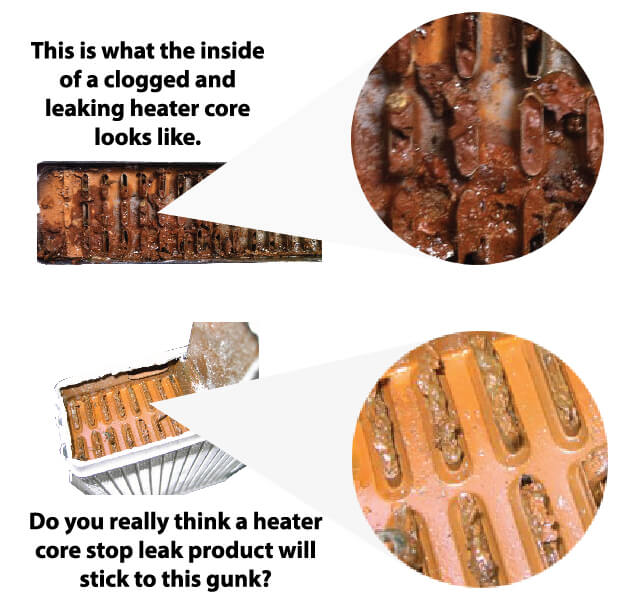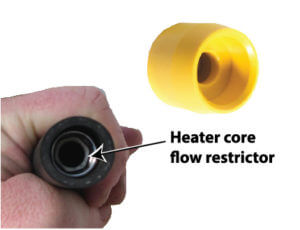What causes heater core leaks
What causes heater core leaks?
Most common causes of heater core leaks
Neglecting coolant changes is the #1 cause of heater core leaks
Heater cores are designed to last the life of the vehicle. That’s why car makers install them deep into the dash of your car—they don’t expect them to ever need service. Not replacing engine coolant at the recommended service intervals is No. 1 cause of heater core leaks, water pump and radiator failure.
Engine coolant does more than prevent your engine from freezing and cracking. Coolant contains anti-corrosive and anti-electrolysis additives that prevent the system from corroding from the inside out. Since a typical engine and cooling system contains many different types of metals, it can develop galvanic action, where ions from the dissimilar metals move from one component to another—like a battery. Fresh coolant prevents galvanic action, while worn out coolant accelerates it.
 Excessive coolant flow rate is the 2nd cause of a bad heater core
Excessive coolant flow rate is the 2nd cause of a bad heater core
Car makers install flow restrictors to increase the “dwell” time of hot coolant in the heater core. That allows them to get the same amount of heat output from a small heater core. If the flow restrictor is removed, too much coolant flows through the tiny heater co re tubes and causes internal wear.
re tubes and causes internal wear.
Using a stop leak product can clog a heater core
If you’ve neglected maintenance of your car’s cooling system and simply add a stop leak product without doing the steps below, chances are the stop leak product won’t work. In fact, it may clog up your entire cooling system. Imagine a plumbing pipe in your home that’s rusted through. It’s dirty, has corrosion on the outside, and you’re trying to fix it by applying an adhesive on top of rust. That’s what most DIYers do when they add a bottle of stop leak product to their cooling system without cleaning it first. So you have to remove the corrosion buildup first before you try a stop leak product. However, there’s a risk in doing that because it can actually make the leak WORSE.
So you’re facing a Catch-22 situation. Try the heater core stop leak product to patch a heater core leak, or perform a complete cooling system flush and risk removing the corrosion that’s plugging multiple pinholes, causing all of them to leak once you’re done.
My position is this: you’re into this for a new heater core at the very minimum. If you flush the system and make the heater core leak worse, you’re in no worse shape. However, if you flush the system and end up with heater core AND radiator leaks, you’ll have to shell out even more money. But don’t think you weren’t in trouble before the flush. If the flush opened up more leaks, it was just a matter of time before those other pinholes started to leak.
To learn about heater core replacement costs, see this post
©, 2017 Rick Muscoplat
Posted on by Rick Muscoplat
